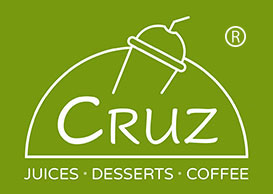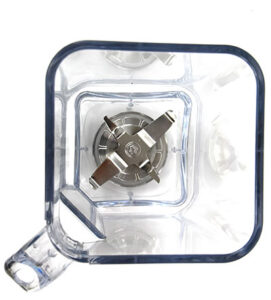The importance of having the best smoothie blender for your cafe
Introducing the new Westberry Q9700 Smoothie Blender
With the rise in popularity of smoothies & ice-based drinks the blender has become ‘must have’ piece of equipment.
Choosing the best commercial blender for your café, even in the short-term, will save you time and money.
Selling just 20-50 smoothies per day will generate yearly sales of £40k-£100k.
Under-spending will do you few favours as cheap blenders take longer to make a drink and potentially need replacing every few months.
With the right commercial blender and ingredients an operator should be able to make an outstanding smoothie, consistently in less than a minute.
Choosing a blender according to specification & features, rather than cost alone, is the wiser move.
Power & Speed
A commercial smoothie blender works best between 1.7 Kw– 2.3 Kw and a speed range of up to 30,000 rpm.
Too slow a speed (22,000 rpm) and it will take too long to make a smoothie.
Too high a speed (38,000 rpm) and the blade bearings in the jar will wear out in a few months.
A good quality motor should not overheat when making a batch 10-20 smoothies in one go.
This can be tested by putting a temperature probe on the metal stem which slots into the drive socket.
This will tell you how hot the motor is running.
Ideally this should be in the 40c – 50c range but there is no recognised target. However, cooler motors will last longer.
As a side note to this, be careful not to touch the underside of the jar immediately after blending as this part can become very hot.
Not one specification or feature will make a blender good at its job. It’s a balance of both specification & features.
Sound enclosure
Most operators prefer blenders with sound enclosures to reduce noise and to keep the jar and lid in place.
A noisy blender is disliked by all, even if it’s around the corner in the kitchen.
After purchase testing a blender for noise is easy. Simply put 25mm water (never run a blender dry) and press the top speed.
Listen with lid closed and open and note the difference. There should be a considerable difference.
If there is little noise difference, it’s likely both the sound enclosure and jar are made of a thinner material. This is not desirable.
If a blender is quiet, both with lid closed & open it could be due to a slower top speed. Little use for making smoothies quickly.
A solid blender with thicker lid & jar walls is best for overall noise reduction.
Comparing the net weight of blenders can give an indication of potential noise level i.e. heavier blenders make less noise than lighter ones.
Pre-set hi / lo programs
Blenders with pre-set programs allow the operator to walk away and return when the blender has stopped.
An important feature when things get busy.
Cheaper blenders tie the operator more to the blender. Both to adjust the controls and even a hand on the jar lid to stop the blender from rocking.
With fewer features the product will rise to the top of the jar, far from the blending area.
This results in unblended ‘bits’ in the finished drink.
Better blenders automatically alternate the speed within the drinks program.
This dramatically increases a blender’s smoothing ability by returning the heavier ‘bits’ back to the blade.
Look for these four drinks programs when choosing a blender.
Button Duration Speed Drink Comment
- 1 10 seconds constant slow speed milkshakes don’t over blender to keep consistency thick
- 2 20 seconds alternating speeds ice-based drinks don’t over blender to keep consistency thick
- 3 32 seconds alternating speeds ambient soft fruits & juice blending berries & banana etc
- 4 44 seconds alternating speeds frozen smoothie ingredients use cloudy apple juice as a smoothie base
Blender Jars
Blender jars, of course, play a significant role in the performance of a blender.
Jars are usually 1 to 2 litres in capacity and made from a clear polycarbonate or triton BPA. Glass jars should be avoided.
Whether the jar’s internal dynamics work can only be determined in practice.
However, these are plus-points when choosing your blender:-
- square jars which can be stacked are better than round
- metal to metal drive – check the underside of jar to drive socket on top of motor base should be metal. Plastic drives break
- liquid measurements are easier to read on square jars
- thicker jar walls which reduce noise are better than thin
- thicker blades which can crush ice are better than thin blades which break
- jars lids that have a good seal but can be removed easily
Where to buy your blender
There are a lot of different blenders on the market but only a few are robust & good enough for the busy café environment.
Most blenders are made for the domestic market and designed to be used for no more than twenty minutes per day.
Using the guide above choose the blender you want and phone or email the company to check their returns and warranty policy.
Buy from a bad catering equipment supplier & you could experience the same as this customer.
Unfortunately, this review is not that unusual from the lower end of the market:-
‘’Equipment broke down within one week of purchase the customer support is shocking / non-existent.
We still have a broken machine 4 weeks down the line and despite numerous phone calls and e-mails we are still no further forward.
Wish we paid a little extra through a reputable company for better quality of equipment and customer support’’
Overall choose a blender on pedigree rather than just on cost, and from a supplier who will stand behind their product.
Richard Garrick, Managing Director of Cruz Smoothies UK, has been testing & selling commercial blenders for 35 years.
If you are looking for a commercial smoothie blender that has outstanding performance and longevity, call Cruz Smoothies today. We will guide and advise you on the best commercial blender to suit the needs of your business.








